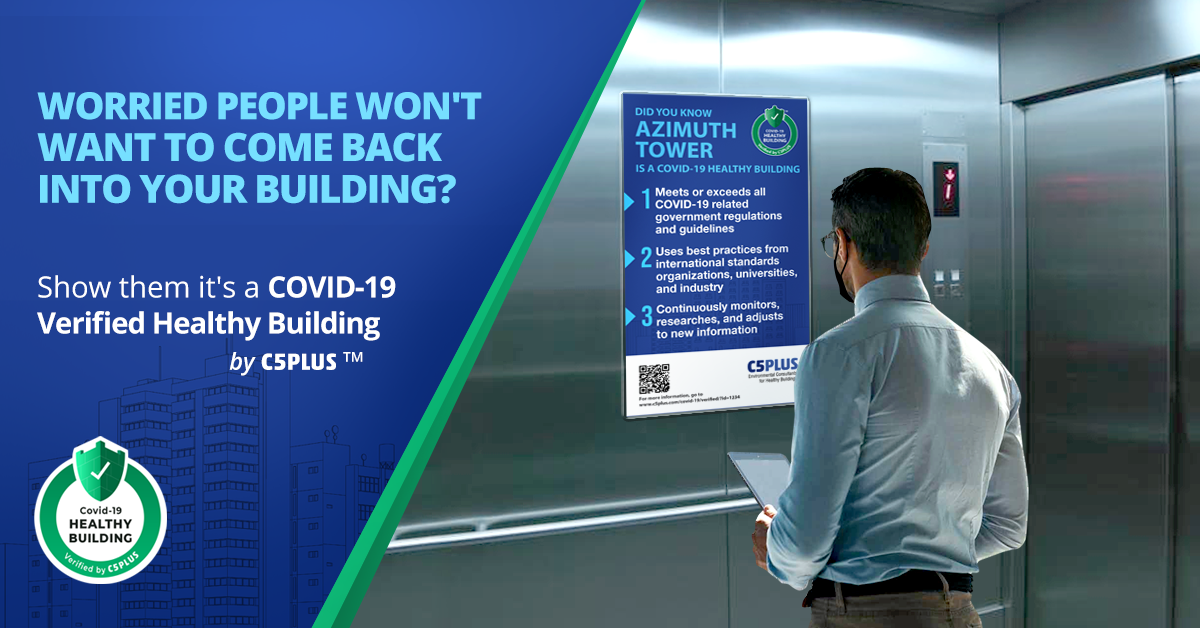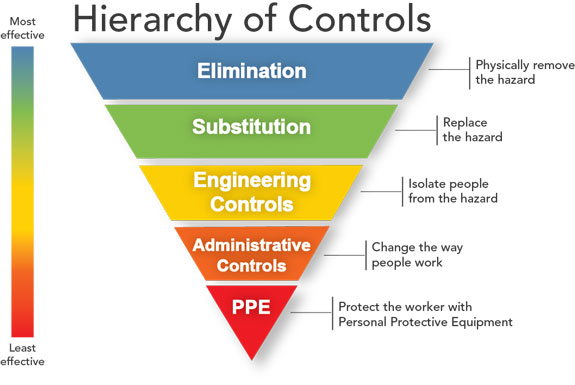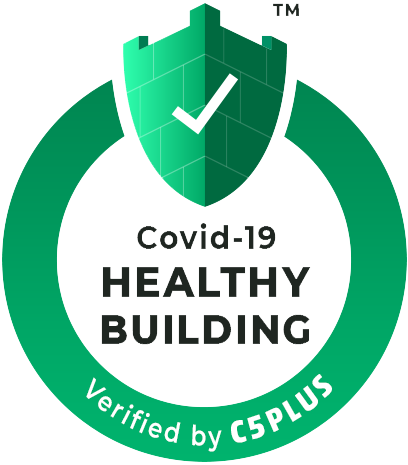COVID-19 AND HEALTHY BUILDINGS
If you're responsible for one or more buildings during the COVID-19 pandemic, you're probably concerned with 3 things (hopefully in this order).
You want to be sure:

Keep Your Building Healthy
Current best practice for controlling hazards in the workplace is to use NIOSH's Hierarchy of Controls - a risk management protocol based on prioritizing the most effective through least effective hazard reduction actions.

As a practical matter, reducing COVID-19 risk in your building means focusing on Engineering Controls, Administrative Controls, and finally, as a last resort, Personal Protective Equipment (PPE).
Engineering Controls usually entail isolating people from a hazard or placing a barrier between them. One example might be installing plexiglass shields at your security or reception desk.
Other examples should include: enhanced cleaning and sanitation; adding wash stations; traffic routing via barriers and signage; and enhanced COVID-19 specific indoor air quality (IAQ).
Administrative Controls: are about changing the way people act. Personal hygiene, enforement of procedures, isolation of people, limiting the size of gatherings and keeping a 6-foot separation would be typical examples.
Personal Protective Equiment (PPE):, as metioned above, should be used as a last line of defence. This might include providing masks, disposable gloves, gloves, or even respirators for staff and contractors. Some facilites might want to even provide PPE to visitors.
Reduce Your Liability

Disclaimer: C5 PLUS LTD is not a law firm, and this section is for information purposes only. We strongly advise consulting with your own legal counsel with respect to any COVID-19 related legal issues.
Regulatory Compliance: The first step is to be certain you're compliant with any regulations or regulatory guidelines.
That means regularly monitoring any information published by relevant authorities and complying with any such instructions or guidance whenever possible. Remember, relevant authorities may include authorities at thh federal, provincial, or municipal level — or even professional colleges or associations.
Civil Liability: You also need to be aware that mere regulatory compliance may not be enough to proect you from civil liability. You need to be able to show that your organization has met a sufficient Duty of Care in protecting any occupants from harm.
This is a higher standard to meet — you need to be able to show you've done everything a reasonable person would have done to keep people healthy in your building.
Ensure People Are Comfortable Returning to your Building
People are understandably concerned about returning to their buildings during the COVID-19 pandemic.
Long experience dealing with potentially hazardous environments has shown us the only way to gain and maintain people's trust in these situations is by being completely honest, open, and transparent. If they even suspect you're spinning or hiding any bad information, they'll reject any assurances you may try to give them.
The truth is this: people are risking their health in returning to buildings during an ongoing pandemic. You want to educate and inform them of all the things you've done to make your building as healthy as it possibly can be under these circumstances.
That means you can't just make the building as healthy as can be — you need to let them know all the actions you've taken and are taking. And that can be a challenge, since 90% of the ations you've taken are invisible to them. Which means you need a communications plan.
Think about what might be useful channels for a COVID-19 communications plan?

WE CAN HELP
Contact us to find out about the COVID-19 Verified Healthy Building Program.™
Call +1 800 807 6122
GET THE FREE INFOGRAPHIC
A quick reference for easily understood best practices from public health authorities, academia, and industry.





